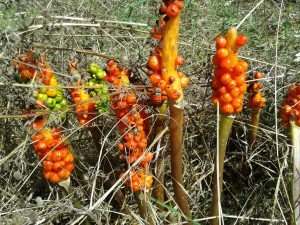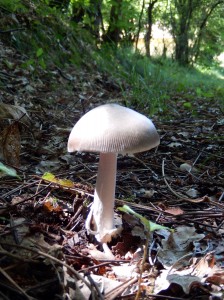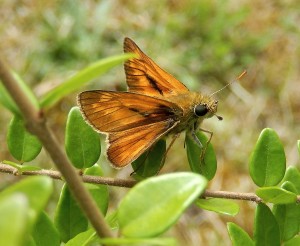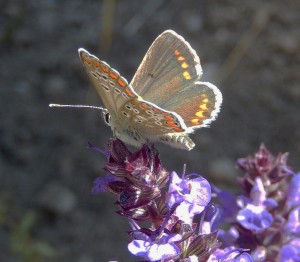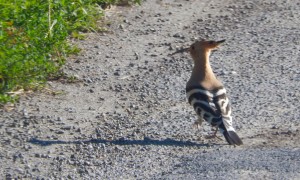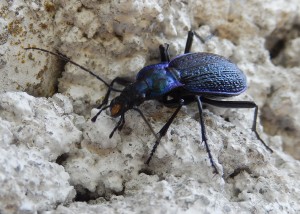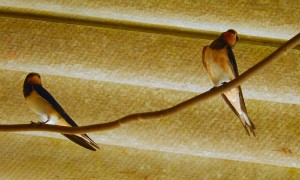
The riding stables swarmed with young Swallows, perhaps 15 of them growing strong for the flight down to Africa, twittering, swooping, perching on lofty cables.
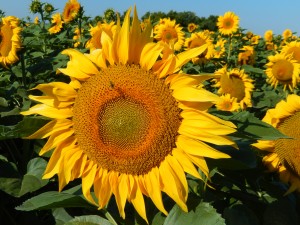
On the hill, maize and sunflowers grew in glorious profusion, the bees drunk on nectar and coated with yellow pollen.
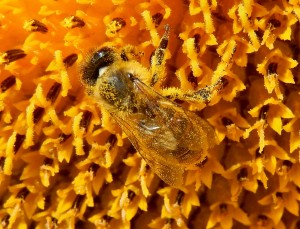
Along the chalk path, Common Blue butterflies skipped and perched on chicory flowers, delicate blue. In the bushy hedge, masses of darkly glossy plums blooming with pale blue yeast dangled from the trees. Above, a Stonechat rasped out his scraping call. I picked up two stones and made the exact same call by scratching them together, as if lighting a stony match: scritch, scratch. House Sparrows cheeped from the bushes; more anxiously, a yellowish leaf warbler, probably a Melodious Warbler, churred continually and flew about semi-conspicuously to perch repeatedly in the long grass to distract me from its nest – its young continually piping from deep in the hedge. I retreated gracefully.
A Turtle Dove cooed softly from high on a power line. At the stables, a Scarce Swallowtail (actually reasonably common here) drifted past; a White Wagtail hawked for flies beside the manège.
At 4pm the temperature reached 34.5 degrees: such a heatwave is called the Canicule or Dog Days, as Sirius, the Dog Star, is high in the midnight sky at this time of year.

